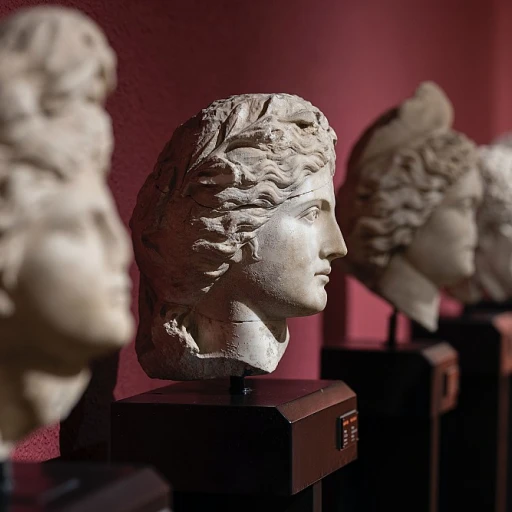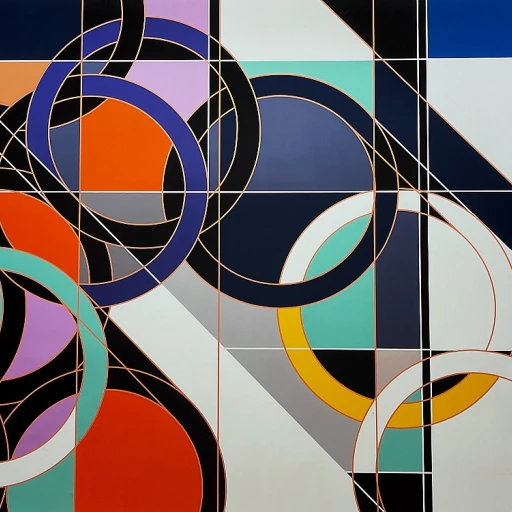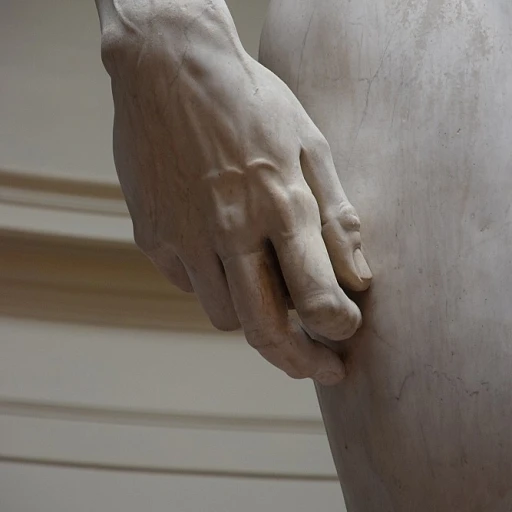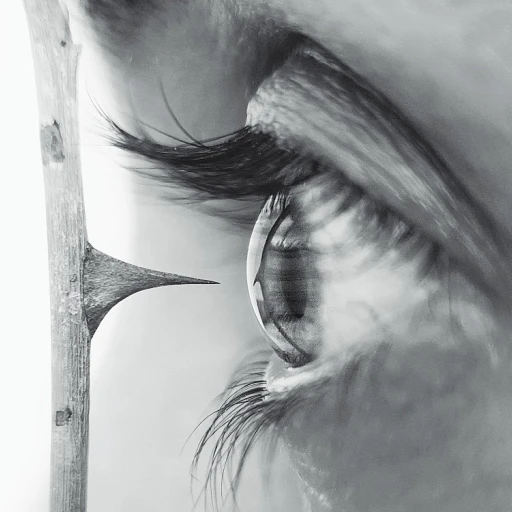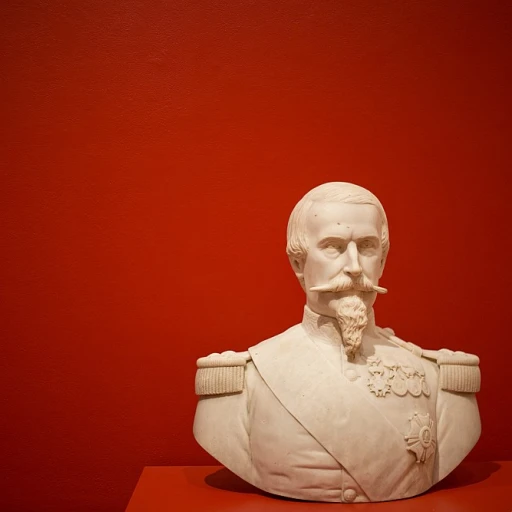-teaser.webp)
The Birth of Impressionism: An Unintended Revolution
The Unseen Beginnings of a Movement
Impressionism, a movement that would redefine the art world, was born out of a unique confluence of circumstances and innovations. In the late 19th century, artists like Claude Monet and Edgar Degas began to challenge the conventions of traditional art. Their works, characterized by loose brushwork and vibrant colors, captured fleeting moments and the play of light in ways that were unprecedented.
Monet's journey into this new artistic realm was partly influenced by his own vision challenges. The exquisite allure of his paintings, such as the iconic 'Water Lilies' and 'Japanese Footbridge', reflect a world seen through eyes affected by cataracts. This condition, which clouded his eyesight, inadvertently pushed him towards a style that embraced the essence of light and color over detail.
Degas, on the other hand, was known for his fascination with movement and shadow. His works often depicted dancers in motion, capturing the interplay of light and shadow in a way that suggested a deeper understanding of visual perception. Like Monet, Degas also faced visual impairments, which influenced his artistic techniques and choice of subjects.
These artists, among others, laid the groundwork for a revolution in art. Their willingness to explore and embrace the imperfections in their vision led to a profound shift in how art was perceived and appreciated. This movement, which began as a challenge to the status quo, eventually became a celebrated genre, influencing countless artists and collectors worldwide.
Monet's Vision: A Case Study
The Enigma of Monet's Visual Journey
At the center of the Impressionist movement stands Claude Monet, a figure whose works remain enigmatic. His art, especially the water lilies and the vivid depictions of Japanese footbridges, transcended conventional renderings of light and color. However, Monet's artistic expressions were profoundly influenced by a less discussed factor: his eyesight.
Monet's vision gradually deteriorated over time due to cataracts, a condition that impaired his ability to perceive color and detail. As cataracts cloud the lens of the eye, they alter the way light and color are seen. Thus, Monet's paintings began to incorporate bolder strokes and less defined forms, mirroring the landscape through his compromised vision.
By the time he reached his later years, Monet's world was shadowed, both metaphorically and physically. His left eye, in particular, suffered extensively. Unable to bear the transformation in his paintings, he underwent cataract surgery, which had dramatic effects on his subsequent works. Observers note a distinct difference in his palette before and after the surgery, suggesting a direct correlation between his tone and eyesight.
These changes prompt a re-evaluation of value in Monet art. As detailed in the discussion on the transcendent perspective on luxury Impressionist artworks, there is an argument that the perceived imperfections resulting from his poor eyesight contribute uniquely to the allure of Monet's paintings.
The implications of Monet's cataract journey reflect broader considerations within the realm of art. Just as Edgar Degas captured the voluptuous shadows in his depictions of dancers, Monet's struggle with vision altered his canvas, providing a rare look into the fluidity of perception and the luxury of imperfection in art.
Degas and the Dance of Shadows
The Subtle Nuances in Edgar Degas' Masterpieces
Edgar Degas, an artist known for his dynamic paintings of dancers, presents an intriguing study in the perception of art through impaired vision. While Degas’ artworks are often acclaimed for their exquisite detail and composition, they were largely influenced by his declining eyesight over time. As he aged, Degas’ vision deteriorated significantly, leading to changes in his painting style and technique. His late works are marked by softer, more abstract forms which some argue were a direct result of his visual limitations.
Interestingly, Degas' plight shares parallels with Claude Monet, who also experienced vision challenges due to cataracts. Monet's "plein air approach" allowed him to embrace the variations in light and color that became hallmarks of his work despite his poor eyesight. Similarly, Degas adapted to his impaired vision by using darker palettes and experimenting with shadows to create depth and dimension.
This interplay of light and shadow is particularly evident in Degas' paintings of dancers. His ability to convey movement and emotion amidst growing darkness speaks to the resilience of the artistic spirit. The "dance of shadows" in Degas’ work creates a mesmerizing juxtaposition of light against dark, reminiscent of the symbolic dance between visibility and obscurity. As these artists contended with their optical struggles, their resultant artworks gained an imperfection that rendered them uniquely powerful and luxuriously compelling.
As we explore the intersection of luxury and impressionism, it becomes evident that artists like Degas and Monet offer a profound lesson: even in the face of adversity, the perception of imperfection can enhance the allure of art. For more insights into the captivating world of luxurious art, you can explore how to elevate your holiday decor with exquisite art forms that celebrate elegance and creativity.
The Intersection of Luxury and Impressionism
The Luxurious Aura of Impressionist Art
In the realm of luxury, Impressionist art holds a unique position. The works of Monet and Degas, with their mesmerizing play of light and color, have transcended time to become symbols of elegance and sophistication. The allure of these paintings lies not only in their aesthetic appeal but also in the stories they tell about the artists' visions and the challenges they faced.
Monet's struggle with cataracts, which significantly affected his eyesight, adds a layer of depth to his works. His paintings, such as the Japanese Footbridge and Water Lilies, are not just visual masterpieces but also reflections of his evolving vision. The soft focus and vibrant colors, influenced by his cataracts, create an ethereal quality that resonates with luxury art collectors.
Similarly, Degas, known for his depictions of dancers, used his poor eyesight to his advantage. His unique perspective on light and shadow gave his paintings a dramatic flair, capturing the elegance of movement in a way that continues to captivate audiences at venues like the Musée d'Orsay.
The Value of Imperfection
The imperfections in these artists' visions have become a testament to the beauty of imperfection in luxury art. The nuances brought about by Monet's cataract surgery and Degas's vision challenges add an authentic touch to their paintings, making them even more desirable in the luxury market.
Collectors and enthusiasts appreciate the stories behind these works, understanding that the artists' struggles with eyesight were not hindrances but rather catalysts for their creativity. This perception of imperfection elevates Impressionist art to a status of luxury, where the narrative behind each brushstroke is as valuable as the art itself.
As we explore the intersection of luxury and Impressionism, it becomes evident that the imperfections in these artists' works are what make them truly exceptional. The depth and emotion conveyed through their paintings continue to inspire and attract those who seek not just beauty, but also a connection to the human experience.
The Perception of Imperfection in Luxury Art
The Beauty in Imperfections
With luxury artwork, the perception of imperfection can transform an ordinary piece into a masterpiece. This is particularly evident in Impressionism, a movement born from anomalies in vision and perception. The works of Monet and Degas, though shaped in part by compromised eyesight, provide a key lens through which we understand the interplay of imperfection and artistic allure. Consider Monet's later works, notably those created after his cataract surgery. His paintings took on a new dimension, experimenting with bold colors and light that seemed to dance on the canvas. Paintings of the Japanese footbridge and water lilies illustrate this vibrant transformation. Looking at these works in the context of cataract-induced insight, one can appreciate the layers of unique vision that Monet artfully rendered. Then there's the distinguished Edgar Degas, whose exploration of shadows, dimmed contrasts, and movement in his depictions of ballet dancers owes much to his evolving eyesight. This dance of shadows gives life to his paintings, inviting viewers to experience the moment amidst the blurred outlines of his poor eyesight. These elements collect to form luxurious impressions characterized by their subtle imperfections. Luxury art, by its nature, magnifies imperfections, often elevating what might seem like faults into desired features. These peculiarities become signatures of authenticity and personalization. In essence, it's the unintentional fractures in vision that grant artworks their unique character, a concept that remains relevant even in modern impressions of art. The notion that art and luxury intersect in their embrace of imperfection continues to influence how we understand contemporary pieces. As audiences, we're drawn in by the film of authenticity lent by Monet's left eye after surgery or Degas's shadow-filled compositions. Indeed, luxury in artwork often lies in the unresolved elements, those very aspects that reflect the artist's personal journey with sight and color.Modern Implications: Art and Accessibility
Contemporary Reflections on Accessibility in Art
In today's art world, the legacy of artists like Monet and Degas offers a profound lesson on the intersection of art and accessibility. Their struggles with eyesight, particularly Monet's battle with cataracts, highlight the resilience and adaptability of artists when faced with physical limitations. Monet's paintings, such as the Japanese Footbridge and the Water Lilies series, are not just masterpieces of Impressionism; they are testaments to his ability to transform impaired vision into a unique artistic perspective.
Modern advancements in cataract surgery have certainly changed the landscape for artists with vision impairments. The procedure, which Monet underwent, allowed him to regain clarity and continue creating his iconic works. However, the journey of artists with poor eyesight remains relevant as it challenges the perception of imperfection in luxury art. The imperfections in Monet's art, often attributed to his cataracts, add a layer of depth and authenticity that resonates with collectors and art enthusiasts alike.
Today, the art community is increasingly aware of the need to make art accessible to all. This includes not only ensuring physical access to galleries and exhibitions but also fostering an inclusive environment where diverse artistic expressions are celebrated. The works of Monet and Degas, despite their visual challenges, remind us that art is not solely about visual perfection but about conveying emotion, light, and color in ways that transcend traditional boundaries.
As we reflect on the influence of impaired vision on Impressionism, it becomes clear that the perception of imperfection can be a source of luxury in itself. The unique perspectives of artists who navigate visual challenges enrich the art world, inviting us to reconsider what it means to see and appreciate art. In this way, the legacy of Monet, Degas, and their contemporaries continues to inspire both artists and audiences, encouraging a more inclusive and diverse appreciation of art in all its forms.


